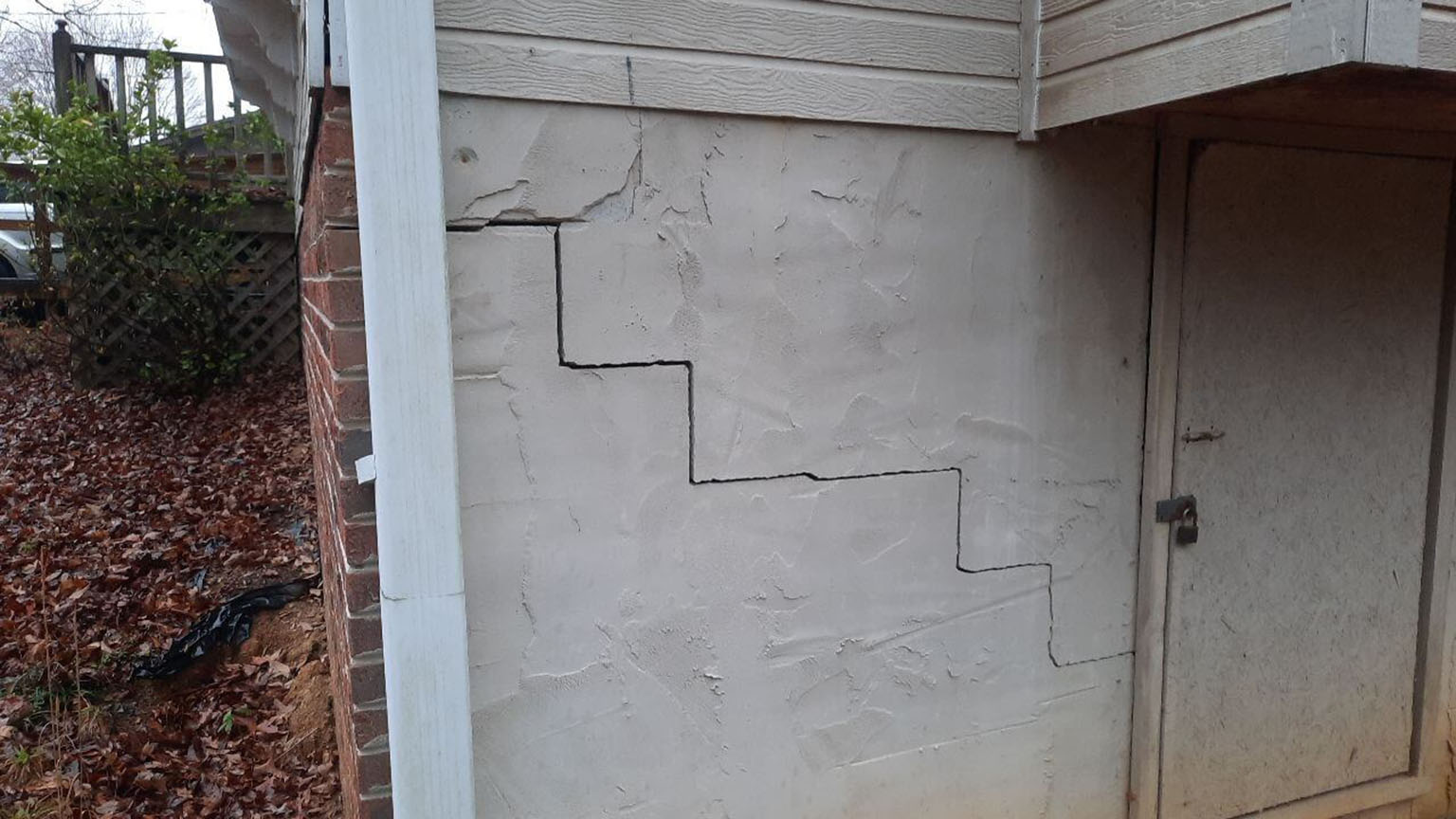Stair-step cracks in foundation walls are a classic sign of foundation settlement or shifting soil. Learn why these cracks form, what they mean for your home’s stability, and how trusted repair solutions can stop the damage before it gets worse.






Vertical, horizontal, and stair-step cracks in brick and concrete block foundation walls act as red flags, indicating a potentially significant foundation problem. These issues can range from soil settlement to foundation movement and shouldn’t be ignored, as they can jeopardize the structural integrity of your home.
These cracks, resembling a staircase, manifest as vertical lines on the mortar or bricks, with some appearing wider than others. Causes might include foundation settlement, movement within concrete foundation walls, or even wall bowing. Recognizing these early can help homeowners address the problem before it escalates.
A thorough diagnostic assessment, encompassing visual examination, moisture tests, and laser leveling, is essential to determine the extent and cause of these stair-step cracks. Homeowners should approach this problem with caution and lean on professional expertise for the best remedies.
Stair step cracks are a prevalent type of foundation crack, easily recognizable by their zigzag pattern. They often appear around the corners of a structure and can be an early sign of foundation issues.
In concrete block (aka cinder blocks or CMUs) or brick foundations, these cracks can signal basement wall failure or settlement of the foundation. Wall failure means the walls are starting to bow or bend inward, shear or lean inward due to external pressure, often from water or soil movement outside the foundation. You might notice these cracks accompanying horizontal cracks, which further indicates the walls are under stress. Foundation settlement refers to a portion of the foundation sinking (or settling) into the ground. If one corner is sinking, a stair-step crack in the block wall may be an indication of this.
No matter where you find them, on the interior or you see wall cracks on the exterior, stair step cracks are a red flag that suggests further investigation is necessary to ensure the structural integrity of your home. Ignoring them can lead to more severe problems down the road, potentially jeopardizing the safety and support of your property. If identified, it's advisable to consult a professional to assess the damage and recommend appropriate remedial action.
Stair step cracks in a foundation are a serious red flag, signaling potential structural issues that merit immediate attention. These cracks often appear as a sequence of steps, mimicking the shape of a staircase, and their presence can indicate different underlying problems depending on the type of foundation material.
Indicators of Structural Problems
In block foundations, stair step cracks frequently accompany bowing walls. This occurs when lateral pressure causes the walls to curve inward, compromising the structural integrity of your home. Typically, these cracks appear near the corners and are often found alongside horizontal cracks.
Brick foundations aren’t immune either. With brick, stair step cracks commonly occur on the exterior walls and can signify a settling foundation. This type of cracking usually results from uneven settling of the foundation, leading to uneven support and potential structural failure.
Why Early Investigation is Important
Ignoring these warning signs can result in severe consequences:
Steps to Take
In summary, stair step cracks are an early warning that your home’s structural integrity is at risk. Prompt, professional evaluation is essential to prevent minor issues from developing into major problems.
Stair step cracks are commonly seen in the mortar joints of brick foundations. These types of cracks follow the mortar lines in a zig-zag pattern, resembling a staircase.
You’ll often find them at the corners of your home or near windows and doors, where the wall is most vulnerable to pressure from settling and shifting foundations. Such cracks are usually a sign that the foundation is settling unevenly, which can compromise the structural integrity of your home.
Investigating these cracks promptly is essential to ensure your home remains safe and supported.
To avoid further damage post-diagnosis, consider waterproofing. It provides a protective layer to foundation walls, warding off water. Key waterproofing steps include:
If stair-step cracks appear in your foundation walls, don’t wait. Schedule a free inspection and estimates with us. Whether in east TN, GA, SC, NC, VA, DC, MD, DE, or PA, we’re here to guide you. Remember, early detection and understanding the signs can save you considerable time, money, and stress in the future.






We respect your privacy. By submitting, you authorize '58 Foundations and Waterproofing to reach you via call, email or text for information about your project needs. We will never share your personal information with third parties for marketing purposes. You can opt out at any time. Message/data rates may apply. Consent is not a condition of purchase. Privacy Policy